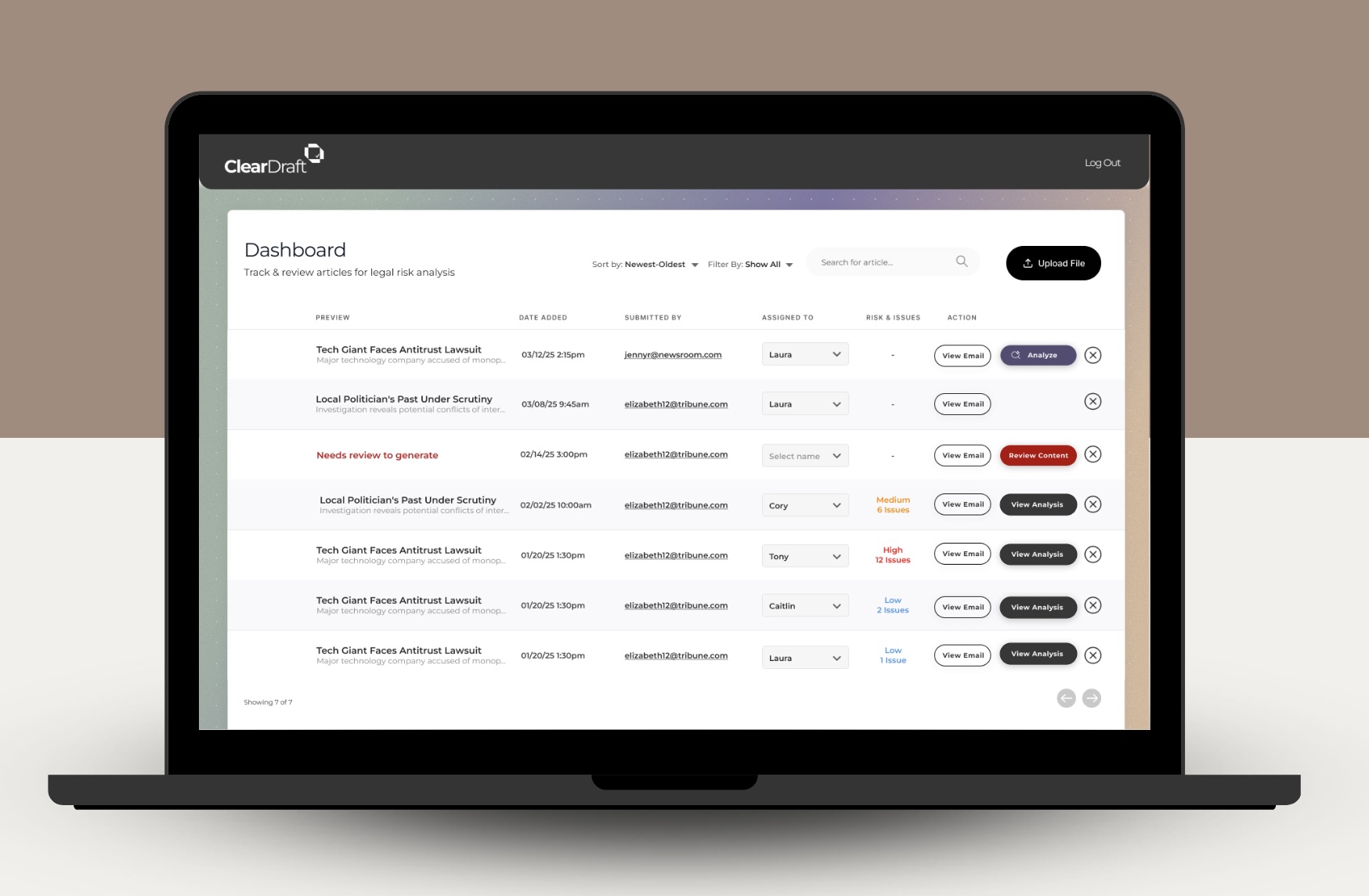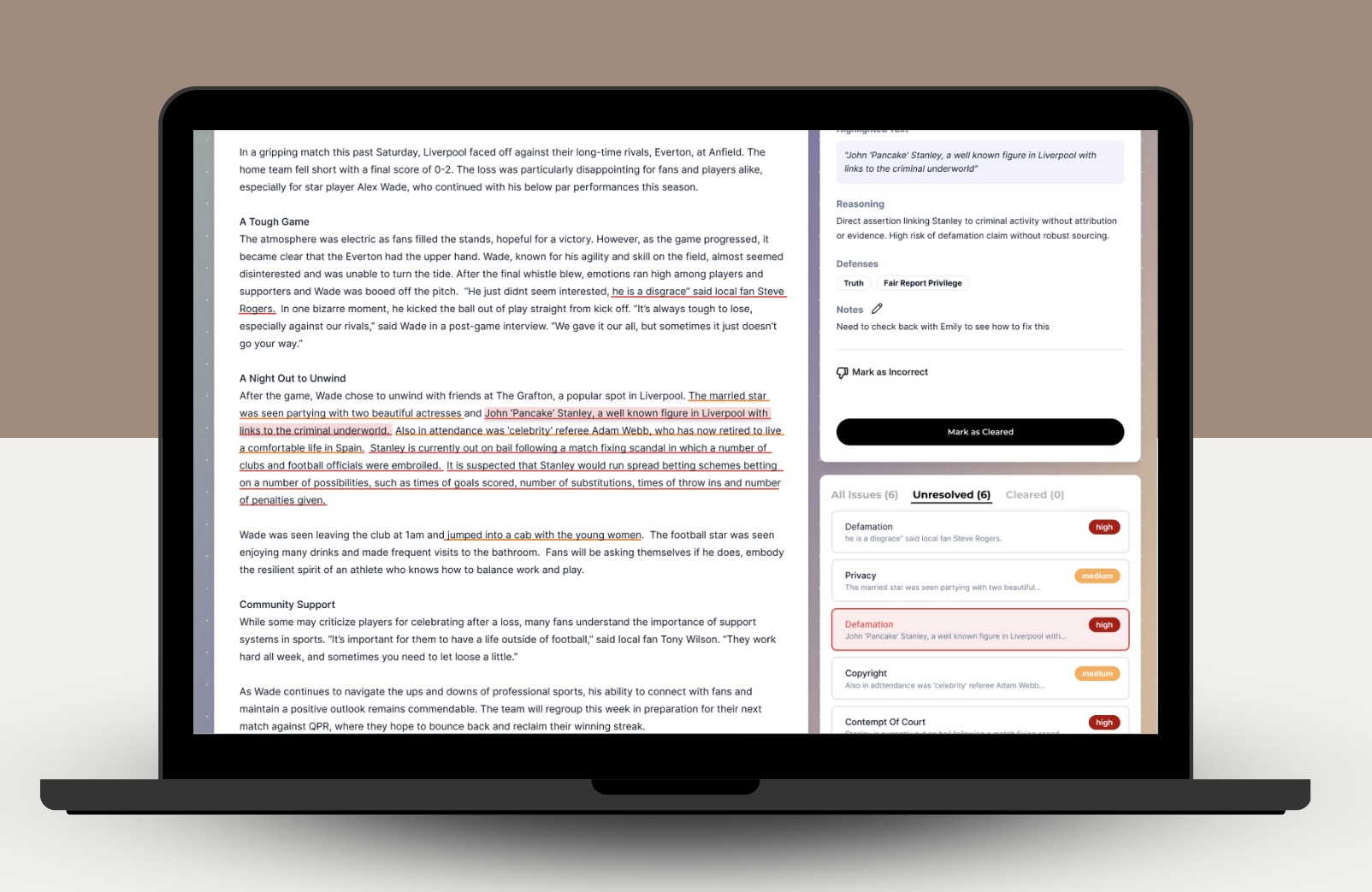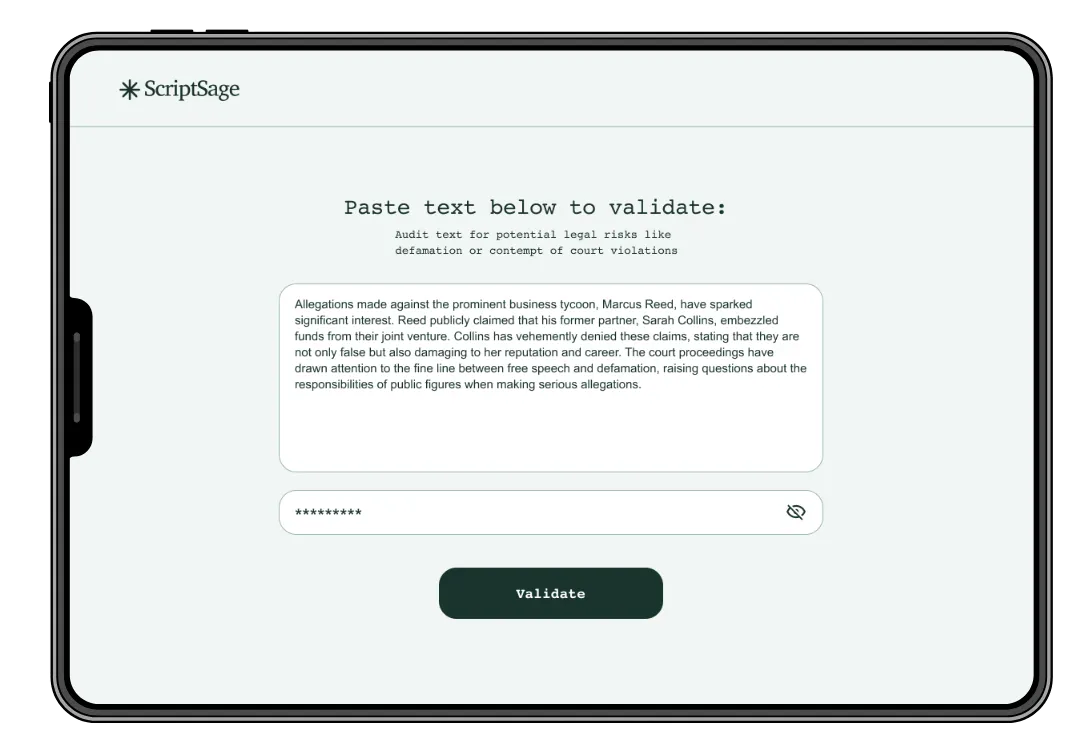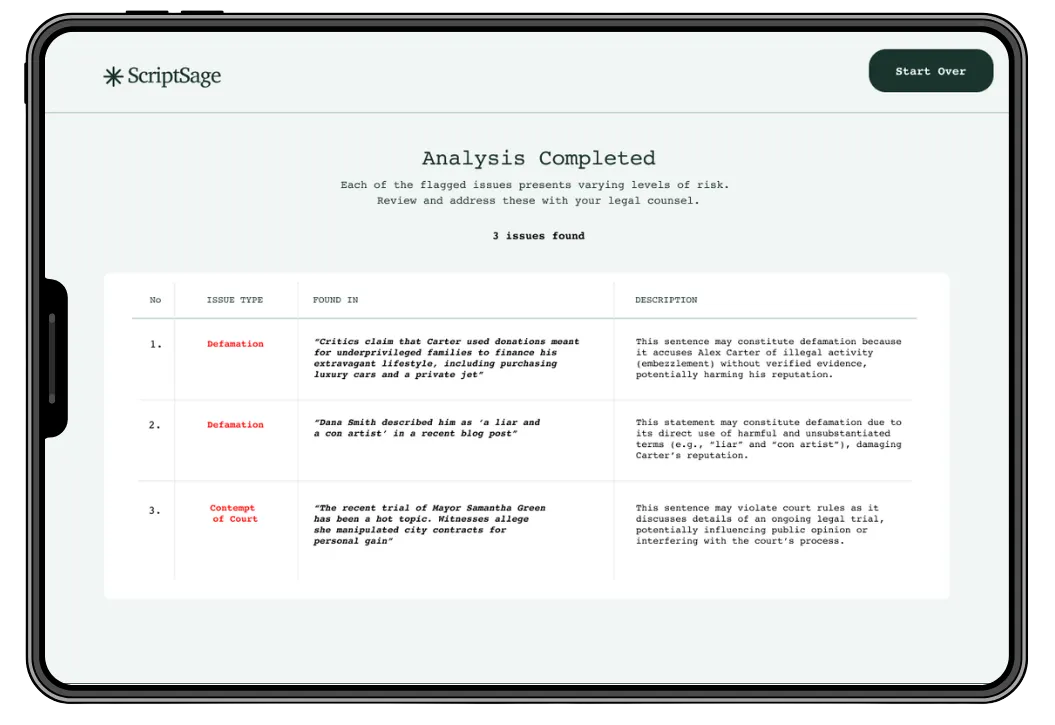
As demand for production clearance services continues to surge, the few providers in the space have struggled to keep pace. Through the Yeti Evolution Fund, we partnered with a team of experienced media lawyers to create ClearDraft - an AI-powered platform designed to modernize and scale the legal review process for today’s fast-moving media landscape.

As media production ramps up, traditional legal script reviews have become a costly bottleneck for studios, writers, and legal teams alike. With ClearDraft, our goal was to transform this manual, time-intensive process into a streamlined, AI-powered workflow - making legal clearance faster, more accessible, and easier to manage across every stage of production.
The standard approach to production clearance presents a number of persistent challenges, including:
Yeti was challenged with prototyping a platform that could reimagine the clearance process in a way that reduces manual effort, minimizes risk, and has the ability to scale alongside the growing demands of the content production industry. To achieve this, the solution needed to thoughtfully incorporate AI capable of automating complex legal analysis traditionally handled by human reviewers.
We worked on a multi-phased R&D and prototyping engagement focused on proving that AI could meaningfully support-and eventually transform-the legal clearance process for scripts.

We kicked off the project with an in-depth exploration of the evolving AI landscape and the complexities of the legal content ecosystem. To build a well-rounded understanding of both domains, we:
Researched the latest LLMs and retrieval-augmented generation (RAG) models to assess their viability for analyzing scripts in a legally meaningful way. We focused on models that could handle nuanced, context-dependent risk factors.
Evaluated third-party legal data sources to explore how known trademark, copyright, and clearance risk content could be used to enhance model accuracy through real-time referencing.

Mapped user flows and designed system architecture to define how users would submit scripts, receive risk assessments, and interact with flagged results-laying the technical foundation for both the MVP and future expansion.
Collaborated with ScriptSage to review manually processed scripts, identifying patterns in how legal teams classify and flag risk items, which helped shape the structure of automated outputs.
Estimated AI inference costs per script, balancing accuracy and processing efficiency to support ScriptSage’s pricing model and long-term business viability.
This phase culminated in the delivery of a comprehensive system architecture diagram outlining how script submission, AI processing, and risk reporting would function end-to-end. We also compiled a curated dataset of manually reviewed scripts to support AI model training and validation, along with documentation on the selected technologies and third-party services best suited for this use case.
To support long-term planning, we developed a strategic roadmap that included model improvement recommendations, cost estimates per script analysis, and a clear plan for transitioning from prototype to MVP.

With the foundation in place, we shifted our focus to validating that AI could reliably identify legal risks within scripts in a way that mirrored traditional workflow. To do so we created a functional prototype that would lay the technical and experiential foundation for the future MVP. This phase included:
Developing a working prototype that accepts scripts and returns risk assessments:
We built a single-page application that enabled users to upload a script and receive a preliminary analysis of potential legal risks. This working prototype served as a tangible proof of concept and provided a clear demonstration of how AI could assist in the legal clearance process.

Testing and refining a series of AI workflows and prompts to optimize identification of clearance issues:
Through iterative testing, we explored various prompt engineering strategies to fine-tune how the AI parsed scripts and flagged potential risks such as brand names, copyrighted material, and character references—critical for aligning with real-world clearance workflows.
Researched retrieval-augmented generation (RAG) to enhance precision with legal data: RAG would allow the AI model to reference external databases of known trademarks and copyrighted content in real time.
Training and testing the AI model on curated example data to evaluate baseline accuracy Using a set of scripts that had already been manually reviewed, we began training the AI model to recognize common patterns and flag risks in a way that mimics expert-level clearance processes. This dataset helped us assess early accuracy benchmarks and provided insight into areas requiring refinement

Creating a testing framework and success criteria to assess prototype viability:
We established a formal framework for evaluating the prototype’s performance, including metrics for accuracy, recall, and processing efficiency. This allowed us to measure how closely the model’s outputs aligned with manually vetted results and set a clear threshold for moving toward MVP development.
At the end of this phase we had a live, working prototype that provided early validation of the ScriptSage concept and surfaced clear next steps toward MVP development.

As part of long-term planning, we explored how ClearDraft could expand its risk analysis capabilities beyond text-based scripts, and evolve to handle video content. To do so, we researched AI technologies capable of identifying potentially problematic elements such as brand logos, artwork, or spoken dialogue in videos.
We also explored tagging frameworks that could analyze video content over time, enabling the system to identify and flag specific scenes or moments for review.
In parallel, we began modeling the infrastructure and cost implications of processing video at scale, and outlined potential strategies for implementation. This research laid critical groundwork for ScriptSage’s future expansion - positioning the platform to stay ahead of industry needs and continue supporting content creators as media formats evolve.
This engagement provided far more than a working prototype — it established a foundation for a truly transformative product. The functional proof of concept demonstrated the feasibility of using AI to accurately identify legal risks within scripts, significantly de-risking future development. Alongside the technical build, our team delivered AI cost modeling and infrastructure planning that equipped ClearDraft with valuable insights for pricing, scalability, and long-term growth.
By combining deep industry expertise with Yeti’s product strategy and technical innovation, the collaboration positioned ClearDraft to confidently advance toward MVP development and market launch — ready to lead the next era of automated media clearance.